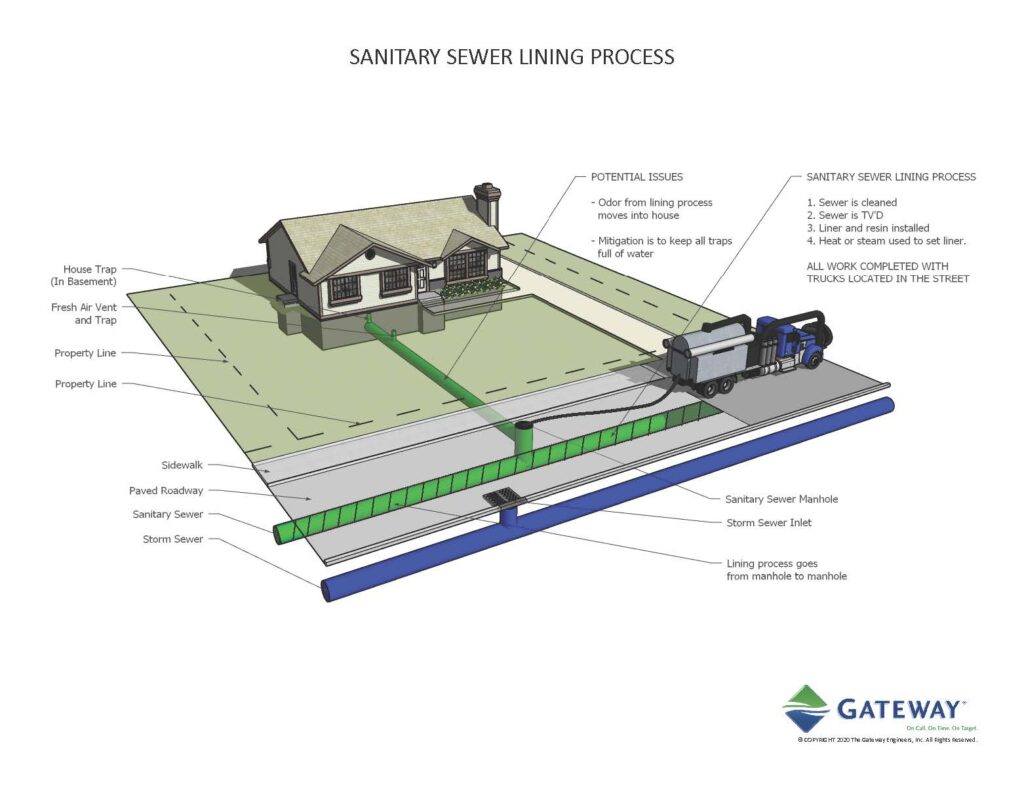Check out what’s
Trending

South Garage work to temporarily change routine
The Inspection Office oversees enforcement of the ordinance adopted by the municipality to prevent overloading of sanitary sewers. The connection of storm water to a sanitary sewer is not permitted. Regulations controlling this matter are issued by The Department of Environmental Protection, The Allegheny County Health Department (County Plumbing Code) and Mt. Lebanon, as part of the Mt. Lebanon Code Ordinances.
Maintain the quality of life and prevent the loss of public and private property.
The Mt. Lebanon Department of Public Works provides and oversees the delivery of proactive preventative maintenance services to protect public health and safeguard public and private property along 160 miles of sanitary sewer pipes.
Where does the wastewater in your home go? Click for an interactive map and other background.
Before you call a plumber, call 911 and have public works inspect it to see if the clog is in the municipal line before you go to the expense of hiring a plumber. Private plumbers cannot work on municipal sewer lines, only lines that are on your property, so it’s worth it to see where the clog is first.
If your neighborhood is scheduled for root treatment, you will receive a flyer.
All products used to treat the sewers are approved by the Environmental Protection Agency and the Pennsylvania Department of Agriculture.
A certified pesticide applicator from Duke’s Root Control and a Mt. Lebanon Public Works inspector are on the site at all times. The foam or herbicide used never comes in contact with anything other than the inside of the sanitary sewer system.
Duke’s Root Control Inc. will be performing sanitary sewer root control work on the municipal sewers as indicated on the map.
Work will begin on March 4th and scheduled for completion by March 15th, 2024. All work will be performed from 7:00 AM-4:30 PM daily. You will be notified by door hanger if this applies to your property. If have a manhole on your property, please keep the area clear and your pets contained. The total time spent at each location should not exceed 30 minutes.
For additional information or questions regarding the Mt. Lebanon herbicide root treatment program, call Bob Hunn, Jr. at 800-447-6687.
In order to control overloading the sanitary sewer, the Pennsylvania Department of Environmental Protection requires each local government to adopt a corrective action plan. One of the requirements of the plan is to reduce overloads to the sanitary sewer by removing rain, or storm water, from the lines. The purpose of dye testing is that property owners can correct the situation and bring their property into compliance. The Public Works Department will provide counseling to the property owner in the most efficient way to correct the problem.
Each year, Mt. Lebanon has a percentage of its sewers inspected. From time to time, those inspections reveal some lines that need to be repaired. One of the repair options uses a procedure called lining, to avoid having to dig a trench at the site of the line. It involves cleaning the line, temporarily re-routing the drainage and inserting a liquid resin which is then heated to create a new smooth inner surface. The line is then inspected again and the flow is restored. It is generally quicker and cheaper than digging and replacing the sewer line. The procedure is usually used on sanitary sewers (sewers that carry household waste water) but can be used on storm sewers (sewers that carry rain runoff.) Lining our aging sewer system significantly reduces the number of blockages and backups.
If the sewers near your home need to be lined, you will be notified by flyer.

Check out what’s

South Garage work to temporarily change routine



